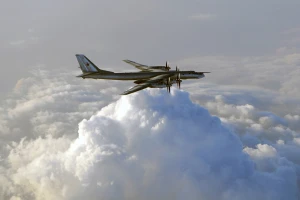
Record range of Ukrainian drones - damage to refinery in Bashkiria. Column by Serhiy Zgurets
Ukrainian long-range drones flew a distance of 1,400 km and on May 9 hit an oil refinery at one of Russia's largest oil refineries, Gazprom Neftekhim Salavat, in Bashkiria
Damage to a refinery in Russia
In the military section, we will be talking about weapons for the frontline rather than combat operations. We know that the arsenals of the Ukrainian Armed Forces and the Defense Forces are currently being replenished with American and European assistance, as well as Ukraine's own defense industry capabilities.
The use of long-range drones at one of Russia's largest oil refineries, Gazprom Neftekhim Salavat in Bashkiria, is proof of Ukraine's potential. Two drones hit an oil refinery at this enterprise, flying a distance of 1,400 km. This is the biggest distance that Ukrainian attack drones have reached so far. I hope there will be more to come.
Ukraine-EU Defense Forum
At the same time, it is clear that today Ukraine can produce weapons worth USD 20 billion a year. This was stated by the Ukraine's Minister of Strategic Industries, Oleksandr Kamyshin, who emphasized that there is still potential for more. The question is where to find the money for Ukrainian defense companies. By the way, this was one of the issues raised at the first EU-Ukraine Defense Industry Forum held in Brussels this week.
We can learn more about the Ukraine-EU forum and how Ukrainian and European companies discussed it from Anton Mikhnenko, a military expert and editor of Defense Express Ukrainian Defense Review magazine, who participated in this historic event.
Anton Mikhnenko said that this is the first time such a large EU-Ukraine forum has been held. Previously, there were several forums that focused exclusively on Ukraine's cooperation with specific European countries, including Denmark, the UK, and others. This was a larger-scale forum that focused on EU cooperation with Ukraine. The forum raised a fairly wide range of issues, including the provision of assistance to Ukraine at the expense of the EU. They talked about creating programs and projects aimed at helping Ukraine, as well as creating conditions for Ukrainian producers to cooperate with European manufacturers and actively work with the EU. They discussed how Ukrainian manufacturers could join the programs and projects that exist within the EU to create samples of weapons and military equipment.
The military expert noted that during the forum, the Europeans emphasized that they had finally reached an agreement on the use of profits from the frozen assets of the Russian Federation in Europe. This is one of the mechanisms that the EU proposed and actually approved. This means that the financial resources that Russia could have received in the form of dividends will be used to buy weapons for Ukraine. There may be different mechanisms. The first mechanism is the purchase of weapons from Ukrainian enterprises for the Ukrainian Armed Forces with these funds. Another mechanism is to purchase these weapons from companies in Europe, and these are the weapons that the Ukrainian Armed Forces need and will be supplied in the interests of Ukraine.
The editor added that the forum was divided into two key parts. The first was the political component, where representatives of the EU and some European associations, Ukrainian officials, and representatives of Ukrainian and foreign companies spoke. This part of the forum featured political statements and discussions of certain problematic issues and, accordingly, ways to solve them. The other component was business, where Ukrainian enterprises and companies had the opportunity to communicate with European companies, i.e., a bilateral dialog. The Europeans were also interested in communicating with Ukrainian manufacturers.
Mikhnenko noted that there is a certain change in perception. While at the first such forums in Ukraine, the focus was mainly on Europeans selling or supplying their weapons to Ukraine, they are now changing their philosophy and realizing that Ukraine has a powerful defense industry. It is in cooperation with Ukrainian enterprises, with customers in Ukraine, such as the Ukrainian Armed Forces and the Defense Forces, that manufacturers can improve their own weapons and military equipment.
In conclusion, I would like to express my hope that the EU-Ukraine Defense Industry Forum will continue to be effective. In addition, I would like to remind you that at this forum it was discussed that the Ukraine Assistance Fund is considering one of the proposals from Ukraine to use the money from this fund to purchase weapons from Ukrainian enterprises. Not all countries were very willing to accept this.
Let's recall the story with France: when the idea of purchasing ammunition for the Ukrainian Armed Forces from this fund was first proposed, France talked about setting up production in European countries. And when it became clear that the pace of ammunition production in Europe was not as fast as Ukraine needed, it was decided to use the fund's budget to buy ammunition outside the EU. Now we see that the same model will be implemented when the funds are used to purchase equipment and weapons from Ukrainian companies.
It was also said that joint ventures and projects should be created. Today, the EU has about EUR 1.5 billion allocated to create samples of new technological solutions. However, European companies themselves say that EUR 1.5 billion is a very small amount, but everyone recognized that Ukrainian companies should be involved in these processes. The creation of new weapons requires not only a technological base, but also some experience to understand the requirements of the battlefield.
War is associated with significant technological requirements. New companies that are being established in Ukraine and those that are already more powerful have to respond to new requirements in one way or another to ensure that weapons meet Ukraine's needs.
BRAVE1 cluster - defense innovations for the Ukrainian Armed Forces
Natalia Kushnerska, Head of the Defense-tech cluster at BRAVE1, said that they managed to create a project for the rapid development of defense innovations and their delivery to the front. It was also possible to build an architecture and structure where all manufacturers have the opportunity to receive military expertise, assistance in preparing documents for codification, and further procurement by the state. Over a year of work, there are already more than 10 successful cases that have received their contracts. The main thing is that during this year of work, the field of defense innovations has been opened up in Ukraine, and Ukraine was able to show the world how much development is going on in the country, how many effective solutions there are. Good examples are ground robots, electronic warfare, signals intelligence , and the use of artificial intelligence in products.
The head of the Defense-tech cluster BRAVE1 noted that over the past year, the cluster has funded more than 180 projects worth more than USD 3 million. This year, UAH 1.5 billion has been allocated from the budget. A grant program is being launched, starting with grants of UAH 500,000, UAH 1 million, and UAH 2 million. In a month, a large grant program will be launched, in which it will be possible to receive UAH 4 million and UAH 8 million for the priority developments that the security and defense sector needs today. Today, Ukraine has an understanding of development and manufacturing teams, their capabilities, and the needs of the military at the frontline - these large grants will help teams create such R&D (research and development) solutions that are absolute innovations.
- News













































